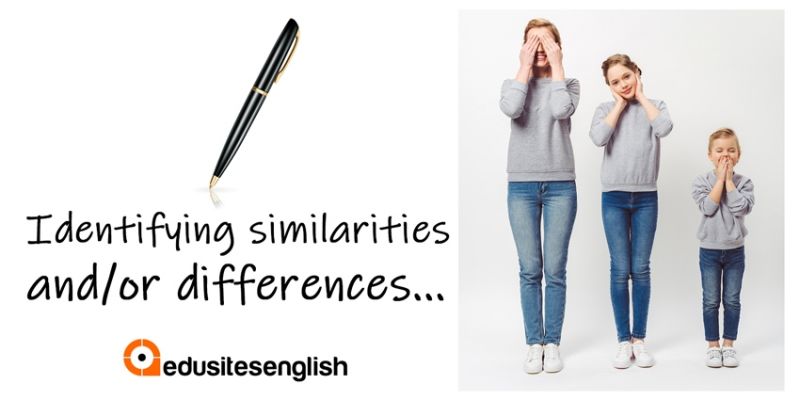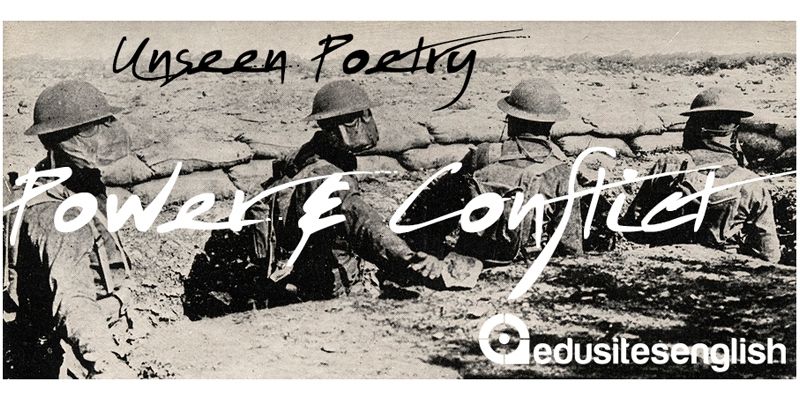

At Edusites English it is our mission to provide you with insightful and relevant English CPD to drive your team expertise and results strategy. Click below to read about GCSE English Language and Literature AQA, Edexcel, Eduqas and OCR, and IGCSE Language and Literature Edexcel and CIE.
GCSE English Literature poetry assesses the extent to which candidates can develop an informed, personal, critical response to a poem, considering some of the ways in which the writer has presented their ideas. The response also assesses the ability to make comparisons and links across poems.
This is shown in the two assessment objectives for unseen poetry:
As a starting point you may wish to consider with their students:

The AQA specification for unseen poetry requires candidates to identify similarities/differences between two poems. The link(s) between the two poems should be clear and as students work through the two poems, they will be forming ideas which can be used in their response to this task based on comparison. There is a specific Edusites guide on comparison which gives more detail on this element.
Tips to Prepare Students for the unseen poetry element in GCSE English Literature
Responding to unseen poetry requires students to make decisions independently. It is important to stress, though, that it is a skills-based exercise, building on key skills developed during a GCSE English Literature course and at KS3. The aim is to build student confidence in responding to unseen poetry, recognising that there are many ‘cross-over’ skills that can be developed steadily through their study of a wide range of poems of different forms and genres. In developing informed personal responses to unfamiliar poems, students can enjoy the creativity of bringing their own fresh, original ideas to the reading of these poems.
To prepare students successfully, responding to unseen poetry ideally needs to be embedded in English curriculum teaching and learning: it develops comprehension skills learnt at Key Stages 2 and 3.
The challenge is to encourage development of those initial, often content-based, encounters with poetry into the ability to write an extended response.
This can be developed through:
This is one of 48 unseen poems available on Edusites English. These anthologies have been produced by one of our many experts who contribute to Edusites English. Our resources are not available anywhere else and are written solely for our subscribers. All Anthologies for AQA English including Fiction, Non Fiction and Poetry are available along with the rest of our 1000s of pages of content when you subscribe to Edusites English. This set of anthologies have been created by Paul Dodd who advised on the new 9-1 GCSE and IGCSE qualifications.
This is shown in the two assessment objectives for unseen poetry:
As a starting point you may wish to consider with their students:
The AQA specification for unseen poetry requires candidates to identify similarities/differences between two poems. The link(s) between the two poems should be clear and as students work through the two poems, they will be forming ideas which can be used in their response to this task based on comparison. There is a specific Edusites guide on comparison which gives more detail on this element.
Tips to Prepare Students for the unseen poetry element in GCSE English Literature
Responding to unseen poetry requires students to make decisions independently. It is important to stress, though, that it is a skills-based exercise, building on key skills developed during a GCSE English Literature course and at KS3. The aim is to build student confidence in responding to unseen poetry, recognising that there are many ‘cross-over’ skills that can be developed steadily through their study of a wide range of poems of different forms and genres. In developing informed personal responses to unfamiliar poems, students can enjoy the creativity of bringing their own fresh, original ideas to the reading of these poems.
To prepare students successfully, responding to unseen poetry ideally needs to be embedded in English curriculum teaching and learning: it develops comprehension skills learnt at Key Stages 2 and 3.
The challenge is to encourage development of those initial, often content-based, encounters with poetry into the ability to write an extended response.
This can be developed through:

Register now for our subject updates and FREE instant access to this article.
Already registered? Login below to continue reading this article.
Join Edusites English for AQA English Literature and English Language constantly evolving in collaboration with trusted teachers, specialists and academics, always with your classroom in mind. Edusites is renowned for subject expertise and targeted resources – including support for post-16 and resit teachers.
In addition to these exam papers, Edusites has moderation videos, 360-degree analyses of how and why marks are awarded, for teacher and students to develop their skills.
The Tibbets Paper 1 was sat in the Summer of 2018. The second of our feedback documents comes to you as a booklet which can be printed off for all of your students after sitting the exam for them to gain skills to apply in their next attempt.
Edusites English is the place to find English GCSE and IGCSE Language exams. But our exams, written by language experts, are not just about weighing the pig we have smart resources to fatten it too...
GCSE English Language Exam Paper help from our expert Grainne Hallahan using a scientific method to get results! Like a juicy little nut that needs to be opened, the new Language paper landed in our inboxes in 2015, quite a different beast compared to its predecessor.
Edusites English (GCSE or IGCSE) 9-1 (Language or Literature) is the place for teachers looking for ideas and information to work with students identifying and interpreting writers' effects. Edusites English continuing professional development supports whole departments to form a critical difference in vocabulary, grammatical features and structural texts.
As part of our new blogs series from teachers who are using Edusites in their classrooms we are delighted that Helen has shared her experience of sitting timed questions with students. There is something wonderful about sitting papers along with students, not least because it causes the classroom to be filled with a group dynamic of concentrated hush...
The ability to compare and contrast is one of the most important and challenging skills to master for the GCSE and IGCSE 9 to 1 English Language and English Literature. Previously compare and contrast techniques were tested only by Controlled Assessment in one of the four units of English Literature: now it reaches across both specifications as detailed below. It takes on much greater significance because some reading passages in GCSE and IGCSE English Language and English Literature are unseen.
AQA make clear their ‘take’ on context which starts life in the DfE curriculum order of 2013: under the heading ‘reading comprehension and reading critically’ there are the following bullet points:literal and inferential comprehension: understand a word, phrase or sentence in context critical reading: identify the theme and distinguish between themes; support a point of view by referring to evidence in the text; using understanding of writers’ social, historical and cultural contexts to inform evaluation…of the text.
In English Language the section dedicated to critical reading and comprehension states that students should ‘draw inferences and justify these with evidence; support a point of view by referring to evidence within the text…’.In Assessment Objective AO2 there is the clear injunction: ‘use relevant subject terminology to support their views’. Assessment Objective AO4 asks them to ‘evaluate texts critically’: the questions for this will lead them towards such evaluation.
This layout allows for the connections to be made between words and leaves space for students to write down modeled examples of sentences that had the flexibility to be inserted into their writing regardless of the question. We looked at the patterns, links and the etymology of the words. We spent the lesson thinking about how to use each word effectively and the way that some words had nuanced meaning.
